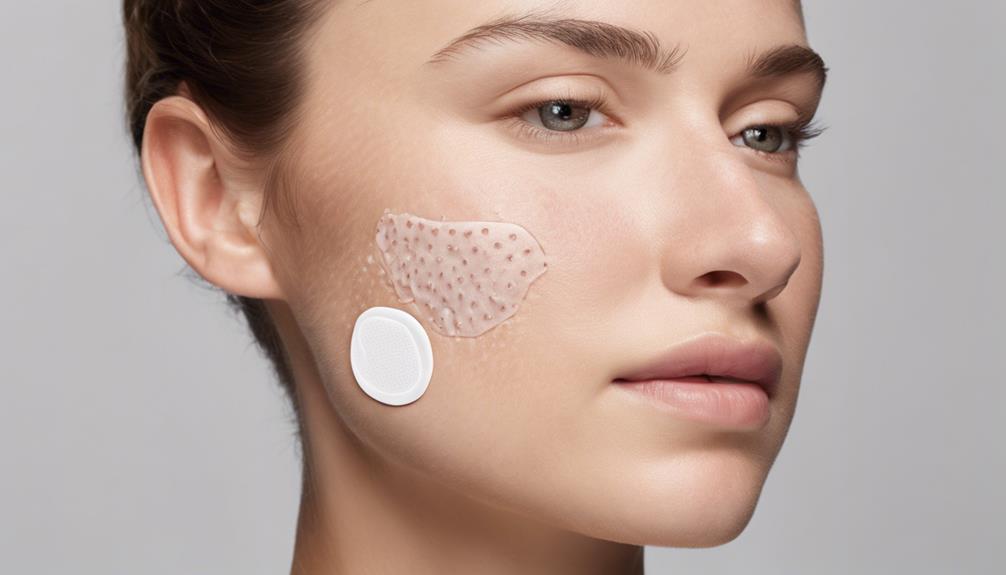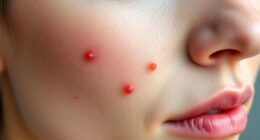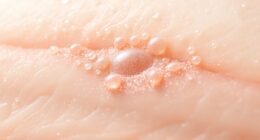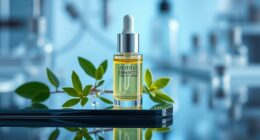Pimple patches function by absorbing oil, bacteria, and pus to decrease inflammation and promote skin healing, while also serving as a protective barrier against infection. The hydrocolloid material assists in establishing an optimal environment for blemish healing by maintaining moisture levels. These patches discourage picking and touching, which helps accelerate the healing process and decrease redness. Their efficacy is rooted in the absorption of impurities and oil, reduction of inflammation, expedited recovery, and enhancement of overall skin quality. To learn more about their advantages and application techniques, feel free to delve into the provided information.
Key Takeaways
- Hydrocolloid patches absorb oil, pus, and impurities to reduce inflammation.
- They create a barrier to prevent infection and promote skin healing.
- Salicylic acid in patches unclogs pores and reduces swelling.
- Patches shield skin from contaminants, aiding in acne prevention.
- Maintaining a moist environment accelerates healing and minimizes redness.
Understanding Acne and Pimples
It's an essential fact that acne and pimples often go hand in hand, especially when sebaceous glands overproduce sebum. Acne is a common skin condition characterized by inflammation, with pimples being a visible sign of this issue. These pimples form when sebum, produced by the sebaceous glands, combines with dead skin cells, clogging pores and leading to the development of acne lesions. Hormonal changes during puberty and menstrual cycles can exacerbate this process, making pimples more prevalent during these times.
Understanding the underlying mechanisms of acne is vital in comprehending the effectiveness of hydrocolloid pimple patches in treating breakouts. These patches often contain ingredients like salicylic acid, which can help unclog pores and reduce inflammation. By adhering to the skin and creating a protective barrier, hydrocolloid patches work to absorb excess fluid, reduce redness, and promote faster healing of acne lesions. This targeted approach can be a valuable tool in the management of acne breakouts.
Role of Hydrocolloid in Patches
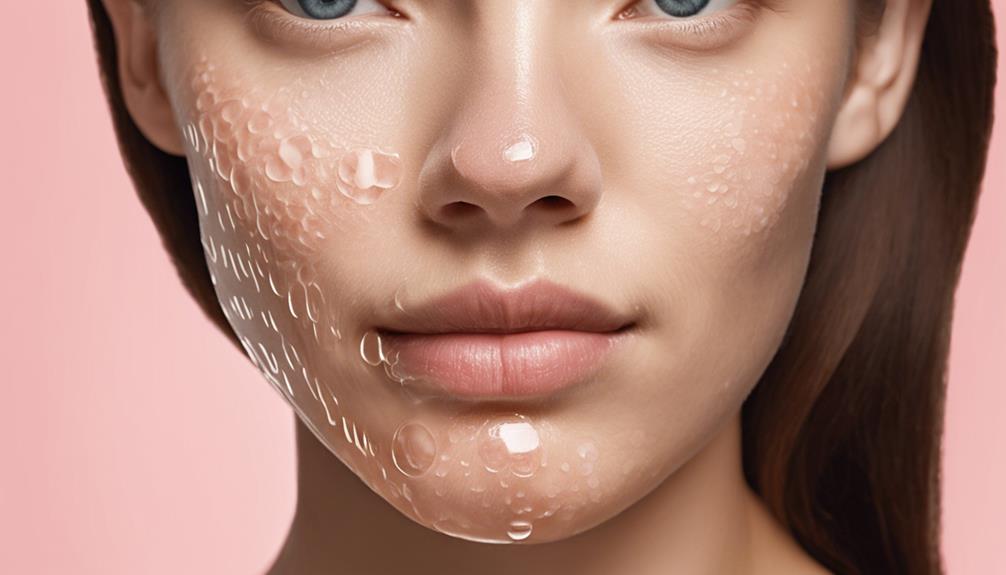
Hydrocolloid in pimple patches is essential for absorbing oil, pus, and impurities from the pimple, helping to speed up the healing process. This gel-like substance creates a moist environment that supports skin regeneration, while also preventing infections by sealing off the pimple from external bacteria.
The presence of hydrocolloid plays a significant role in the effectiveness of pimple patches in treating acne by drawing out impurities and reducing inflammation.
Hydrocolloid Absorbs Pus
When treating acne, the role of hydrocolloid in pimple patches is essential for absorbing pus and promoting faster healing. Hydrocolloid, a gel-like substance, helps to draw out pus, fluid, and impurities from pimples. This absorption process not only accelerates the healing of the pimple but also aids in reducing inflammation and flattening the affected area. By creating a moist environment, hydrocolloid supports the natural drainage process of the pimple. Clinical studies have shown that patches with hydrocolloid technology are effective in improving the appearance of pimples, especially open and draining acne lesions. The table below highlights the key role of hydrocolloid in treating acne:
| Role of Hydrocolloid in Pimple Patches |
|---|
| Absorbs Pus and Fluids |
| Creates Moist Environment for Drainage |
| Reduces Inflammation and Flattens Pimples |
| Clinically Proven for Improving Acne |
Promotes Healing Process
Promoting the healing process, the hydrocolloid in pimple patches actively absorbs excess oil and pus from acne breakouts. This action helps in promoting faster healing by creating a protective barrier over the pimple, reducing inflammation, and maintaining a moist environment conducive to skin recovery.
The hydrocolloid material not only absorbs excess oil but also aids in preventing further infection and irritation, ultimately improving the appearance of acne lesions. By using patches with hydrocolloid, one can support the skin's natural healing mechanisms and enhance the overall healing process.
Additionally, the clinical evidence supports the effectiveness of hydrocolloid patches in reducing redness and inflammation in pimples, making them a valuable tool in combating acne and promoting healthy skin.
Absorption and Healing Process
To understand how pimple patches work in treating acne, it's important to explore the absorption and healing process they facilitate. When a hydrocolloid patch is applied to a pimple, it starts to absorb excess oil, bacteria, and pus, creating a clean and healing environment. This absorption helps to reduce inflammation, redness, and swelling, promoting faster recovery.
The hydrocolloid material acts as a barrier over the pimple, preventing further infection and irritation while keeping the affected area protected and moist. By maintaining a controlled environment, the healing process is accelerated, leading to an improvement in the appearance of the pimple.
Prevention and Skin Protection
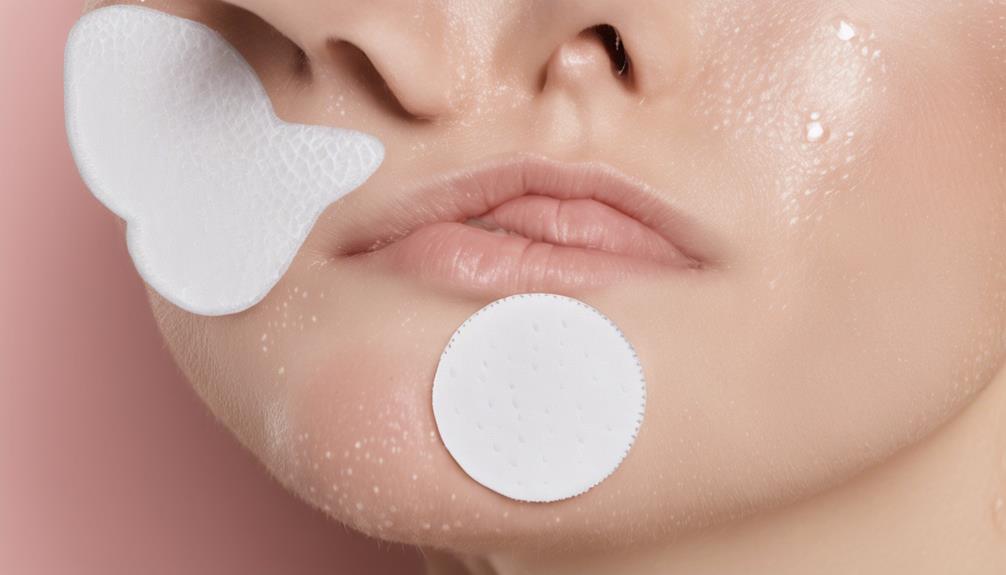
Using pimple patches can be seen as a proactive measure to shield the skin from potential contamination, aiding in the prevention of further acne development. These patches create a protective barrier over pimples, acting as a shield against external irritants and reducing the risk of infection.
By keeping the affected area covered, pimple patches prevent picking or touching, which can worsen acne and prolong the healing process. The hydrocolloid gel in the patches absorbs excess oil and bacteria, promoting a clean and moist environment for healing, thereby enhancing the skin's natural recovery process. This not only aids in faster healing but also helps in reducing inflammation.
Additionally, the shield created by the patches prevents external factors from coming into contact with the pimple, ultimately minimizing scarring and skin damage. Using pimple patches not only protects your skin but also supports its healing process, making them an effective tool in skin protection and acne prevention.
Reduction of Inflammation
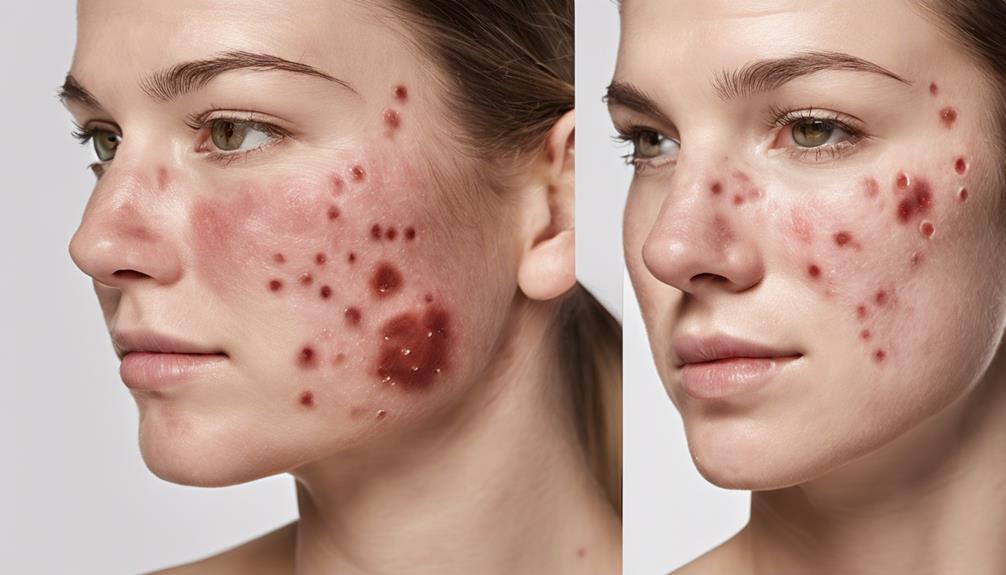
After shielding the skin from potential contamination through prevention measures, the focus shifts to the reduction of inflammation when using pimple patches. These patches, containing ingredients like salicylic acid and tea tree oil, target inflammation and redness, aiding in the healing process.
The hydrocolloid patch creates a protective barrier over the pimple, preventing further irritation while absorbing excess oil and pus, which helps reduce swelling and inflammation. By maintaining a moist environment around the pimple, these patches promote faster healing and minimize redness.
Studies have demonstrated that pimple patches with anti-inflammatory properties can notably decrease the size and redness of pimples. By actively working to reduce inflammation, these patches assist in calming the affected area, allowing the skin to heal more efficiently.
Application and Duration on Skin
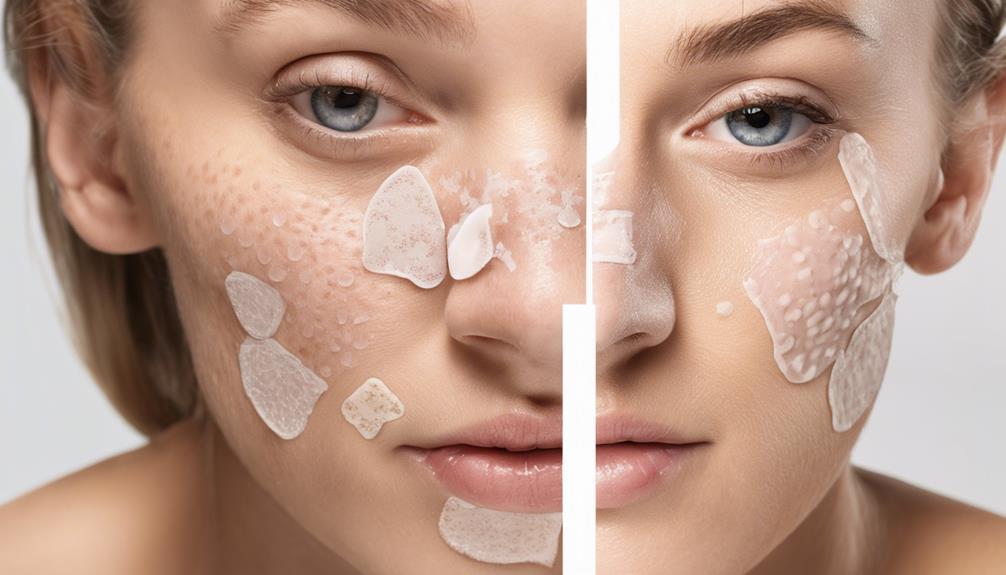
When applying pimple patches, maintain clean, dry skin to enhance their efficacy in combating acne. It's essential to follow the product's instructions regarding the duration of wearing the patch, which can range from several hours to overnight. Some patches are specifically designed for daytime use, offering continuous treatment and protection.
The duration of wearing a pimple patch may differ depending on the severity of the blemish and personal preferences. Ensuring that the skin is clean before applying the patch helps the active ingredients to work effectively in targeting the pimple. Additionally, protecting the patch from excess moisture or friction can help maintain its adherence and effectiveness over time.
Effectiveness on Different Types of Blemishes
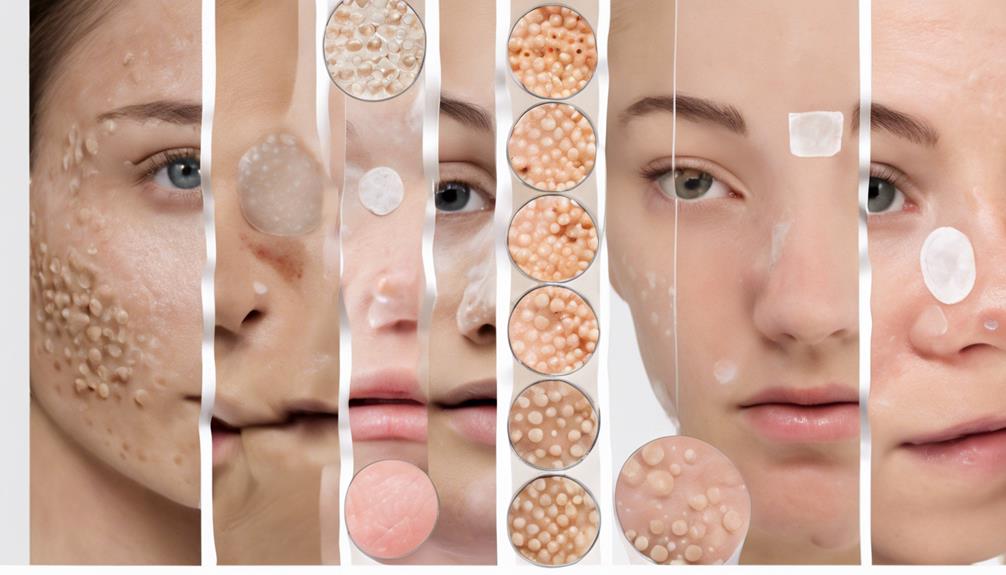
Pimple patches demonstrate effectiveness in treating various types of blemishes, including open, draining, healing pustules, papules, and cysts. These hydrocolloid patches work by absorbing excess fluids from active blemishes, creating a favorable environment for quicker recovery. They're particularly useful for visible pimples with pus, aiding in reducing inflammation and promoting healing.
However, it's worth mentioning that pimple patches may not be as effective on closed or deeper lesions, blackheads, or whiteheads. Their primary focus is on actively treating raised and visible pimples. By targeting these specific types of blemishes, pimple patches can help speed up the healing process and improve the overall appearance of the skin.
If you have active bumps that you want to address, using pimple patches can be a convenient and effective way to support your skin's recovery.
Considerations for Sensitive Skin
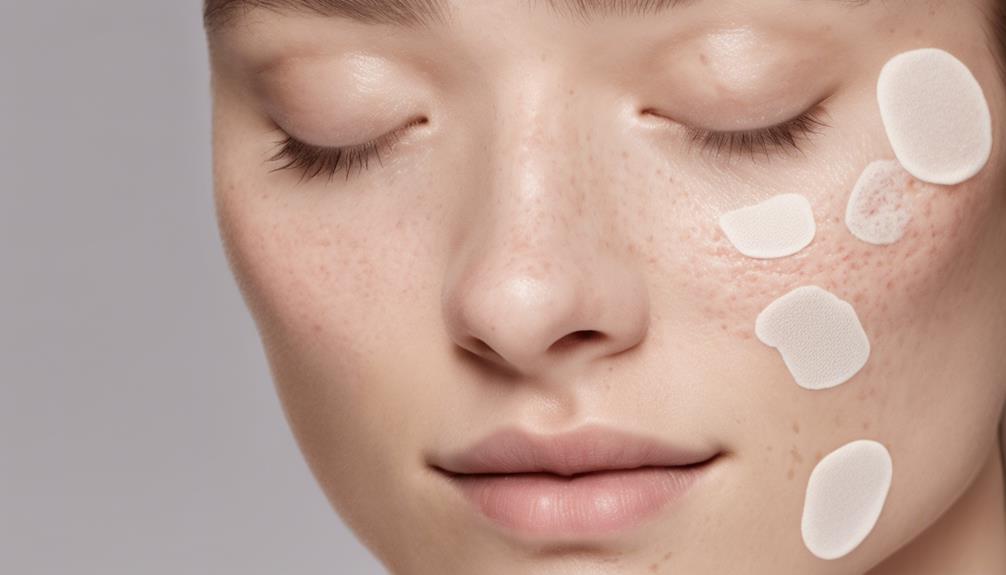
Sensitive skin requires special consideration when using pimple patches.
Factors such as skin sensitivity, proper patch application techniques, and evaluating allergy risks are important for individuals with delicate skin.
Skin Sensitivity Factors
Consideration for individuals with sensitive skin includes examining the ingredients in pimple patches to prevent potential irritation. Some skin sensitivity factors to keep in mind are:
- Pimple patches with salicylic acid may cause redness and irritation in sensitive skin types.
- Skin reactions can vary based on individual responses to different patch ingredients.
- Benzoyl peroxide in patches can lead to discomfort or red marks on sensitive skin.
- Opting for patches without additional active ingredients is advisable for those with sensitive skin to avoid potential irritation.
It's essential to test a small patch on a less visible area before full application to determine suitability for sensitive skin.
Patch Application Tips
Exploring suitable patch materials and gentle removal methods can enhance the comfort of patch application for individuals with sensitive skin. When selecting a patch for acne treatment, opt for hydrocolloid patches or those made from silicone or hydrogel, as these materials are less likely to cause irritation.
It's crucial to choose patches without added ingredients and minimal adhesive to guarantee compatibility with sensitive skin and prevent skin reactions. Dermatologists recommend testing a small area before full application to confirm harmony with sensitive skin. Look for hypoallergenic patches to further minimize the risk of irritation.
Taking these steps can help individuals with sensitive skin care for their acne spots effectively while reducing discomfort during patch application.
Allergy Risk Assessment
To evaluate the allergy risk associated with pimple patches for sensitive skin, it's important to consider potential reactions to adhesive materials.
- Perform a patch test before using pimple patches on sensitive skin.
- Adhesive components in pimple patches can cause skin irritation, redness, or itching in those with sensitive skin.
- Ingredients like salicylic acid or benzoyl peroxide may exacerbate sensitivity in individuals prone to allergic reactions.
- Consult a dermatologist if you experience persistent discomfort or adverse reactions while using pimple patches on sensitive skin.
Potential Allergic Reactions
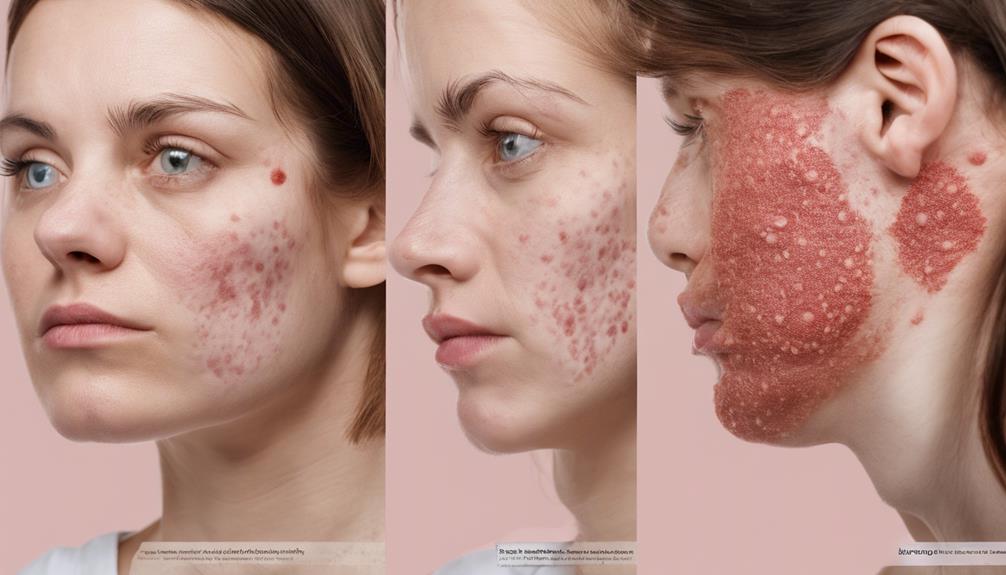
When using pimple patches, it's important to be aware of the potential for allergic reactions that can arise from sensitivity to adhesive materials or added ingredients. Allergic reactions may manifest as redness, itching, rash, or irritation at the patch application site. Individuals with sensitive skin or known adhesive allergies should conduct a patch test before using pimple patches to check for any adverse reactions.
Some patches contain ingredients like salicylic acid or tea tree oil, which could trigger allergies in certain individuals.
If you experience severe allergic reactions or persistent discomfort after using pimple patches, it's vital to discontinue use immediately and seek guidance from a dermatologist. Dermatologists can provide expert advice on managing allergic reactions and recommend suitable alternatives. Prioritizing skin health and safety is paramount, so it's crucial to address any signs of allergic reactions promptly to prevent further irritation and promote effective acne treatment.
Skin Healing and Treatment Benefits
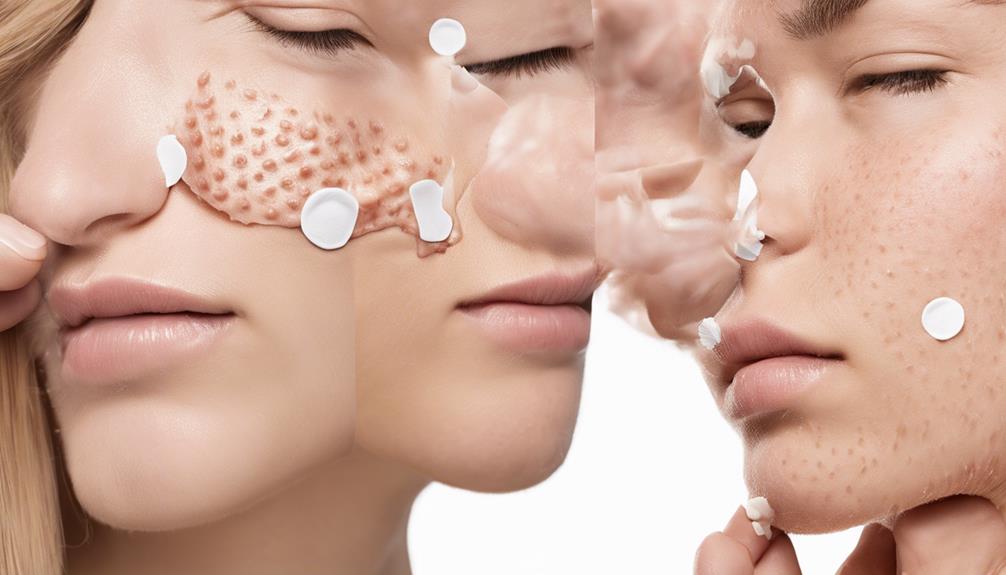
Creating a protective barrier over the affected area, pimple patches facilitate faster healing by maintaining a clean and moist environment. Pimple patches offer various skin healing and treatment benefits, including:
- Absorb Oil: These patches help absorb excess oil from the pimple, reducing inflammation and promoting skin recovery.
- Eliminate Bacteria and Pus: By drawing out bacteria and pus, pimple patches aid in clearing up the blemish and preventing further infection.
- Promote Skin Recovery: The protective barrier created by the patch supports the natural healing process, allowing the skin to recover more efficiently.
- Provide an Ideal Environment: Pimple patches create an ideal environment for blemish recovery, enhancing the skin's ability to heal and minimizing scarring.
Frequently Asked Questions
Are Pimple Patches Actually Good for Acne?
Pimple patches are indeed good for acne. They create a protective barrier over pimples, aiding in faster healing by absorbing excess oil, bacteria, and pus. Clinical trials show visible improvements, especially with hydrocolloid technology.
Patches with added ingredients like salicylic acid or tea tree oil target specific acne concerns. Their effectiveness is evident in the $510 million market value.
Do Pimple Patches Work on Unpopped Pimples?
Pimple patches work effectively on unpopped pimples by creating a protective barrier that absorbs excess oil and pus. They help reduce inflammation and redness, promoting faster healing.
Patches with active ingredients like salicylic acid or tea tree oil target bacteria, aiding in the resolution of unpopped pimples. Hydrocolloid patches are especially beneficial as they draw out fluids and prevent further infection.
Clinical studies have shown improvement in the appearance of unpopped pimples with pimple patches.
What Do Pimple Patches Draw Out?
Pimple patches draw out excess oil, pus, and impurities, aiding in pimple healing. They create a barrier to prevent bacteria from entering, promoting faster recovery by absorbing fluids from raised pimples.
The ingredients help reduce inflammation and promote skin regeneration. So, when wondering what pimple patches draw out, remember how they target those pesky impurities, helping your skin along the path to a clearer complexion.
How Do Pimple Patches Pull Out Pus?
Pimple patches pull out pus by absorbing fluids and creating a moist environment that helps draw out the pus effectively. The adhesive nature of the patch pulls out pus, preventing further infection and reducing inflammation.
Clinical studies confirm that hydrocolloid patches are effective in extracting pus from pimples, aiding in the healing process by accelerating the recovery of blemishes.
Do Pimple Patches Work in the Same Way as Star Pimple Patches for Targeted Acne Solution?
Yes, pimple patches work in the same way as star pimple patches targeted acne. They help to absorb excess oil and reduce inflammation, promoting faster healing of pimples. The hydrocolloid material in the patches acts as a protective barrier, preventing further irritation while providing targeted treatment.
Conclusion
To sum up, pimple patches work by absorbing the gunk from your pimples, promoting healing, and protecting your skin from further irritation. While they may not be a magical cure for acne, they can definitely help in reducing inflammation and speeding up the healing process.
Just remember to choose the right patch for your skin type and be mindful of any potential allergic reactions. Give them a try and see if they work for you!
